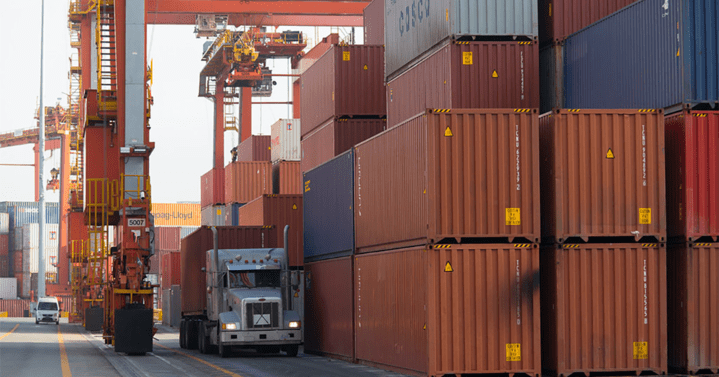Today customers are very aware of the last mile, even if they are unfamiliar with the term. E-commerce businesses continue to raise consumer expectations for last-mile transport with every notification that their items are just a few stops away. However, with truck capacity tightening, shippers need to be proactive from the very first mile and throughout drayage service management too.
According to DAT analysis, as of January 16, 2022, load costs on their network “increased by 35% last week for dry vans, up 17% for reefers but down 4% in flatbed.” As rates remain higher overall, shippers need to amp up their first-mile understanding to keep drayage service costs under control and avoid unnecessary waste.
What’s the First Mile and Drayage Service Relationship?
Most materials and manufactured items cross multiple modes of transportation between their first and final destination. This is where the often interchangeable terms of “first mile” and “drayage service” come into play.
The first mile describes the first leg of a journey that moves freight from its original location toward its end user. Drayage is a more specific term to detail the transport of imported cargo from port to its first over the road (OTR) transit. By understanding the importance of drayage’s unique role in the supply chain, shippers are equipped to manage this area’s rising costs.
1. Know Port Fee Schedules, Charges, and Potential Incentives
Across the United States, local governments and companies are making moves to clean up their ports and air. The Ports of Long Beach and Los Angeles have introduced clean truck fund rate fees to motivate shippers and carriers to invest in zero-emission and low nitrogen trucks. In addition, container dwell fees have already been initiated at the twin ports to minimize long dwelling cargo at the terminals. Shippers aware of current port requirements can actively choose ports that fit with their resources and timeline, such as choosing the Port of Savannah over west coast ports.
2. Attract, Hire and Retain More Drivers
The nationwide truck driver shortage is old news. However, the capacity challenge of drayage requires hiring more drivers for trucking drayage. As the demographic of truck drivers has been evolving, shippers with in-house carriers are advertising to a wider variety of people at younger ages. Stakeholders who focus on the accuracy and efficiency of drayage service with port officials promote short hauls as a prospective driver incentive. Prospective and current drivers who don’t have to sacrifice home life and rest due to hangups at the port are more likely to contribute toward a company’s retention rate.
3. Track Real-Time Container Status
It’s in a shipper’s best interest to track and trace while trucking drayage. By using telematics during transport, shippers gain valuable data to use on multiple levels. Knowing exactly when ocean cargo has arrived provides decision-makers with the ability to improve turn times to save on per diem fees.
In addition, passing on visibility to the customer provides competitive customer service that consumers expect in the age of e-commerce. By using a tool to automatically share the location of a product from beginning to end of the transport journey, shippers give their consumers peace of mind and trust for future orders.
4. Have a Plan for Temporary Storage of Goods Too
Experienced shippers know to expect obstacles along the way. By preparing accordingly, shippers bring value to their business during seasons where many experience losses. By networking with temporary warehouses that are local to port, shippers don’t need to be afraid of inclement weather or other driver delays.
For example, the lane between the Port of Savannah and New York is often snow-laden. When this delays the long haul driver scheduled to transport the next load, shippers with established partners like PortCity can temporarily move their goods to a local warehouse until the driver gets past the snow.
5. Give Drivers Flexibility With Self-Scheduling Tools.
BCOs and shippers who partner with carriers benefit from offering self-scheduling tools. By allowing fleet managers and owner-operators in trucking drayage the leeway to assist during freight surges at the port, shippers can rest knowing the port congestion will subside by the time their freight is offloaded.
In addition, shippers who take an active role in covering unexpected schedule-related costs have a better chance of becoming a shipper of choice with a high-quality dray partner.
Improve Drayage Service From the First Mile Through Final Delivery to Your Other Warehouses With PortCity
From drayage to delivery, logistics matter at every turn. Companies that invest in best practices such as those listed above can move their freight efficiently through the dray process. By partnering with a drayage expert, shippers can master the first mile of delivery and provide excellent customer service, visibility, and expectation from start to finish. To learn how PortCity can optimize your drayage service, connect with us today.
